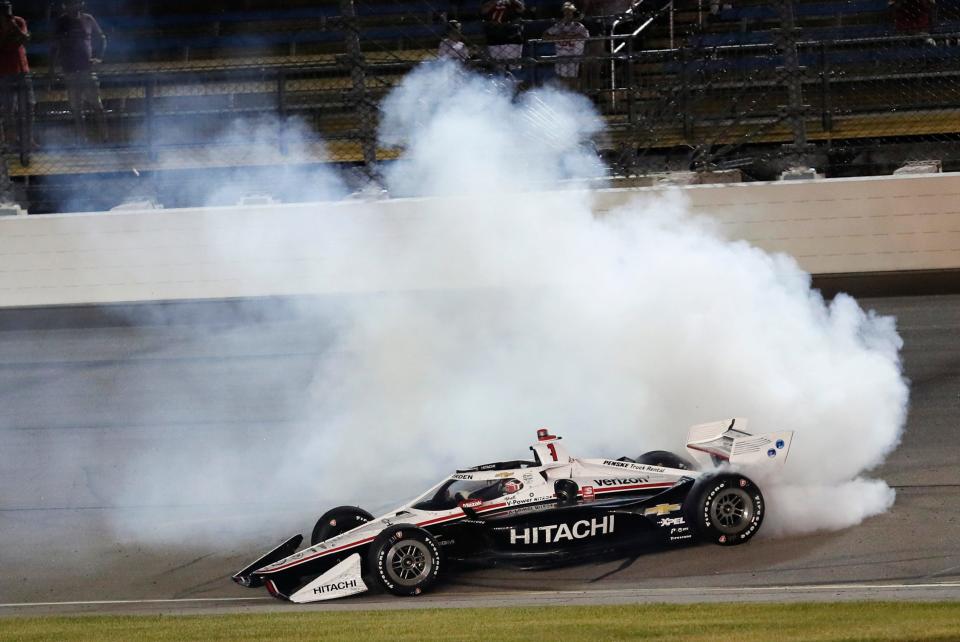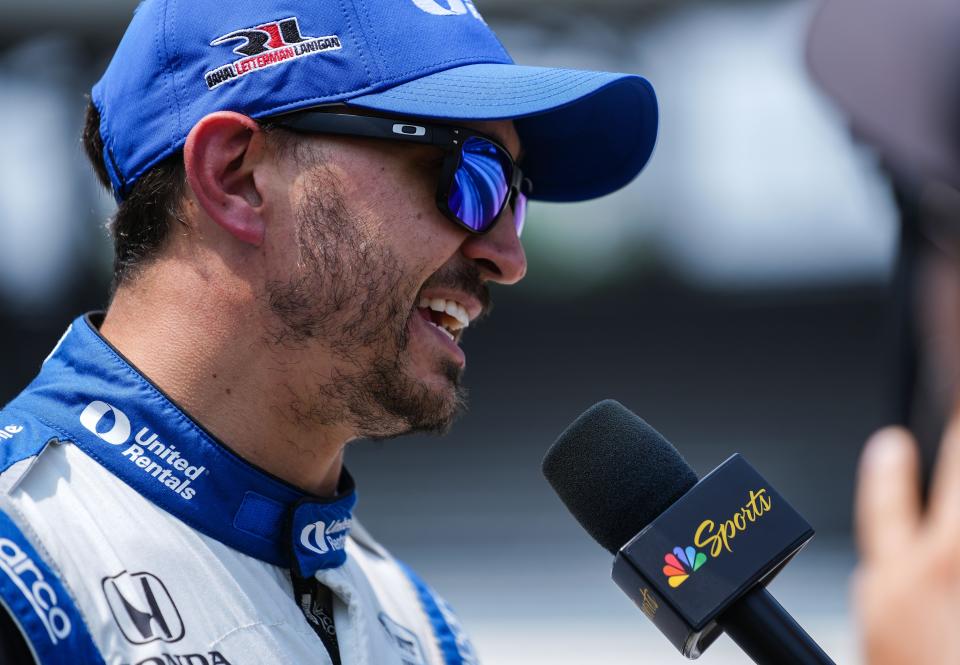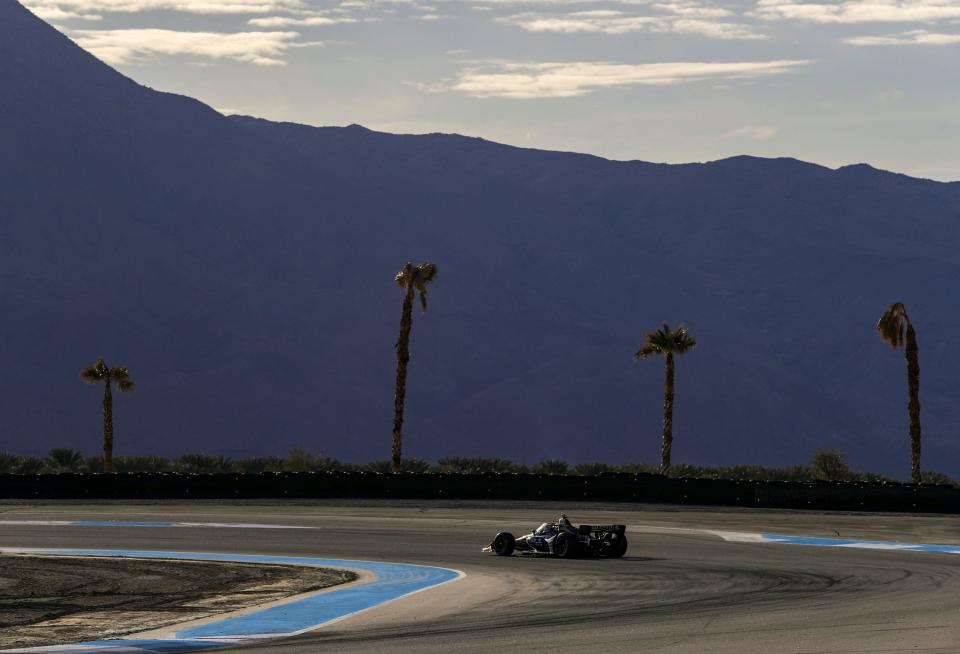5 thoughts on IndyCar's 2024 schedule: Risk in Milwaukee return, loss of Texas and more
Next year’s IndyCar calendar, unveiled Monday morning two weeks after 2023 champion Alex Palou was crowned, features the revitalization of a historic venue, the loss of another and a significant shakeup to where you’ll be able to find and watch IndyCar races on TV this year.
After dissecting next year’s 17-race schedule, here are IndyStar motorsports insider Nathan Brown’s five biggest takeaways.
Can Milwaukee survive this time, especially as a doubleheader?
In a schedule ripe with changes, IndyCar’s return to the Milwaukee Mile – the 1-mile oval in West Allis, Wisc. – for the first time in nine years is the most intriguing. It’s also the most uncertain.
IndyCar will return to Milwaukee next Labor Day weekend with authority, holding a doubleheader weekend at the track that only this year again began hosting high-level racing series after an eight-year hiatus. Looking back well over a decade, the track struggled mightily, held back by its ability to put enough butts in seats to make its NASCAR and IndyCar weekends work. The track ceased holding events altogether in 2010 amid financial turmoil, managed to return in 2011 and then was left off IndyCar’s original 2012 schedule before becoming a late addition in February of that year with the help of Michael Andretti.
The five-time Milwaukee race-winner promoted the race from 2012-15, during a span he also operated IndyCar races in New Orleans and Baltimore, as well as a Formula E race in Miami. In the end, not even Andretti could turn the clamoring of American open-wheel fans begging for the series to continue running there into people willing to buy tickets.
Where Penske Corp. president Bud Denker and Penske Entertainment vice president Michael Montri thrive is in the corporate sponsorship world, and their track record, tenacity and rolodex of contacts is what gives this event a glimmer of hope. Should they find a key customer-facing sponsor like Hy-Vee, who has helped transform IndyCar’s Iowa Speedway doubleheader, this weekend could look and feel very different from those of the late 2000s and early 2010s, between fancy temporary suites and a loads of business-to-business deals being brokered in the background. Even as race promoters turned its Iowa tickets into one of the priciest buys on the calendar, with grandstands still just partially-filled (and done so in loads of spots by local giveaways), Denker and others seem to believe it’s a model that can work in today’s IndyCar.
And let’s hope so, because for the track’s first major race in eight years, the NASCAR Trucks series pulled roughly 17,000 fans last month. You would hope IndyCar would be able to draw more, but having a doubleheader, with one of IndyCar’s best tracks and overall venues (Road America) just an hour up the road could prove challenging for a fan base whose lackluster enthusiasm for buying tickets failed to support even one race nearly a decade ago.
If Penske Entertainment can do there what they’ve done with Iowa, it will stand to be one of the company’s biggest wins to date.

Everything's bigger in Texas -- even the losses
It’s hard to imagine we’d be in this place if Eddie Gossage was still at the helm at Texas Motor Speedway – the track president who welcomed IndyCar with open arms when the Dallas-Fort Worth-area track opened its gates in the late-90s. Every year since that June 1997 race, IndyCar (or the Indy Racing League) have visited at least once – making TMS the series’ longest-tenured annual track partner outside the Indianapolis Motor Speedway.
The 36 total races haven’t always been stunners, but the series appeared this past April to have finally all but perfected its package at the track with this current car – putting together a race some members of the paddock called IndyCar’s most-riveting visit there in nearly a decade if not ever.
And now, all of that progress and history is lost – for 2024, at least – after track general manager Mark Faber and his Speedway Motorsports Inc. bosses failed to come to terms on a race weekend for next season – despite the sides having signed a multi-year contract that began with this spring’s race.
At issue, according to series sources, is the track’s desire to take its lone NASCAR race weekend of the year and pluck it out of its spot in the Cup series’ 10-race playoff lineup and put it in April – a timeframe the track long held its first of two race weekends for years. The wish came in direct conflict with IndyCar’s own targeted date of April 7 that would’ve seen the track host its two biggest races of the year on back-to-back weekends.
No serious momentum for TMS to host a NASCAR-IndyCar weekend, as we’ve seen at the Indianapolis Motor Speedway for the last four years, seemed to exist from NASCAR or TMS. The track then wished to have slotted into IndyCar’s closing stretch in September, but the series had already earmarked its season-finale for Sept. 15 in Nashville, along with a doubleheader at Milwaukee on Labor Day weekend.
Was there technically an open weekend Sept. 7-9 between the two? Yes. Why it wasn’t adopted is uncertain. What is certain is that, as has been the case for decades, IndyCar continues to play second-fiddle to NASCAR from a scheduling and priority perspective.
Insider: If NASCAR-IndyCar crossover is a meaningful partnership, it must continue at a new home

Pair of night races give ovals chance to thrive
It can’t be understated how big it is for two of IndyCar’s five short oval races to be run at night at Iowa and World Wide Technology Raceway. It’s no secret – and no fluke – that some of the best moments from IndyCar’s recent history at both racetracks have come under the lights, and a return to those conditions is something the entire paddock has been clamoring for.
The cooler conditions in the summer make it far more reasonable to get a larger ticket-buying audience – increasingly important for Iowa, given the series serves as the race weekend’s promoter. What that will mean for Iowa’s concert lineup and scheduling – which during the last two years of the doubleheader has featured award-winning acts before and after both races – is unclear, but for the sake of the racing product, it’s a sure-fire homerun.
The difficulty for landing night races has always been finding the right TV slot that, even in the doldrums of the summer, can bring additional fees for the series and/or the race promoter. That IndyCar got one on network TV and the other on cable will be a great litmus tests for TV ratings’ sake, and both should be starred as potentially the best races of the season.

A shrinking slate of races on NBC
A series that in the first season of its current three-year contract with NBC (2022) landed 14 races on network TV, followed by 13 this year, will show just nine points-paying races on the broadcast channel. It’s just one more than IndyCar had during its first exclusive season with the network in 2019 and as many as the last year of the three-year deal in 2021.
Few details about the pair’s deal are understood publicly – including what NBC pays IndyCar per year for rights fees, though it is rumored to be in the $20 million to $30 million range – but this is undoubtedly a notable change in pace, given the fact that the first two years of this deal were highlighted by that expansive network package. It’s also important to note that this is the last year in the current deal. Penske Entertainment Corp. brass plan to hit the ground running in October in scheduling meetings with prospective new partners to kick-off its negotiations.
On its face, the number itself isn’t near as jarring, when you consider NBC will also air the All-Star exhibition-style $1 Million Challenge at The Thermal Club in March, and if IndyCar lands a postseason exhibition race in Argentina – a project they’ve been working towards for the better part of a year – perhaps NBC will air that as well (though that would seem far more likely only if they’ve reached a new deal for the future). IndyCar has also landed two Saturday night oval races – something the series schedule has sorely lacked of late – and those slots, whether on NBC (Iowa Race 1) or USA Network (WWT Raceway) don’t come cheap. A rollback in IndyCar’s network races elsewhere could have been a piece of that bargaining, and the series very well might’ve taken a small boost in its annual rights fee to run six races on USA Network – NBC’s longtime cable channel that replaced NBC Sports as the network’s home of cable sports – to help try and raise the channel’s sports profile.
None of this is something to sound alarms about – just don’t expect a record-breaking season-long ratings average like this season (1.32 million viewers, making it IndyCar’s most-watched season since 2011).
Latest IndyCar-NBC TV deal: With NBC betting on IndyCar, series betting on fans, IndyCar prepares for future

A strenuous travel schedule
If all goes well on IndyCar’s 2024 budget front in the coming weeks and months, Miles told IndyStar earlier this month that the 22 members of series’ Leaders Circle program – which pays out substantial guaranteed prize money in several chunks throughout the season to the previous year’s top-22 eligible full-season entries in points – could take a significant hike year-over-year, from just over $900,000 to as much as $1.3 million.
But a considerable amount of that may end up going straight to teams’ travel budgets, with next year’s schedule featuring four one-off trips out to the west coast with the addition of The Thermal Club’s $1 Million Challenge and the separation of Portland and Laguna Seca.
Three such trips haven’t been all that uncommon in recent years, with one in the spring for Long Beach and separate ones for Portland and Laguna Seca (or Sonoma) for the finale, if those events weren’t able to be scheduled on back-to-back weekends. In a bit of an oddity in 2021, all three were back-to-back-to-back on a closing west coast swing, while 2022 featured two such trips (Long Beach and Portland/Laguna Seca) and three this past year, with the addition of the preseason Open Test at Thermal.
It's unclear if there was ever a thought to linking Portland and Laguna Seca up in the middle of the summer, with Nashville shifting to the season-finale spot and three combined races at Milwaukee and WWTR making for an oval-centric post-Olympics stretch. But such a move may have been eliminated from IndyCar’s list of options with Formula E claiming the weekend of June 30 as its Portland stop – the weekend immediately after IndyCar’s new date for Laguna Seca. Booking Portland International Raceway in a couple weeks before or after that may have then been nixed by PIR officials, forcing it to end up sandwiched between oval weekends in the Midwest in August.
Pairing Thermal’s $1 Million Challenge the week ahead of Long Beach was likely untenable due to conflicts with the first weekend of the massive Coachella Music Festival held just down the road April 12-14 – and I imagine going in, IndyCar’s hope was that the exhibition weekend would merely eat up the gap between St. Pete and Texas, which for this year at least, doesn’t exist.
This article originally appeared on Indianapolis Star: 2024 IndyCar schedule: Is Milwaukee a risk? What happened to Texas?

